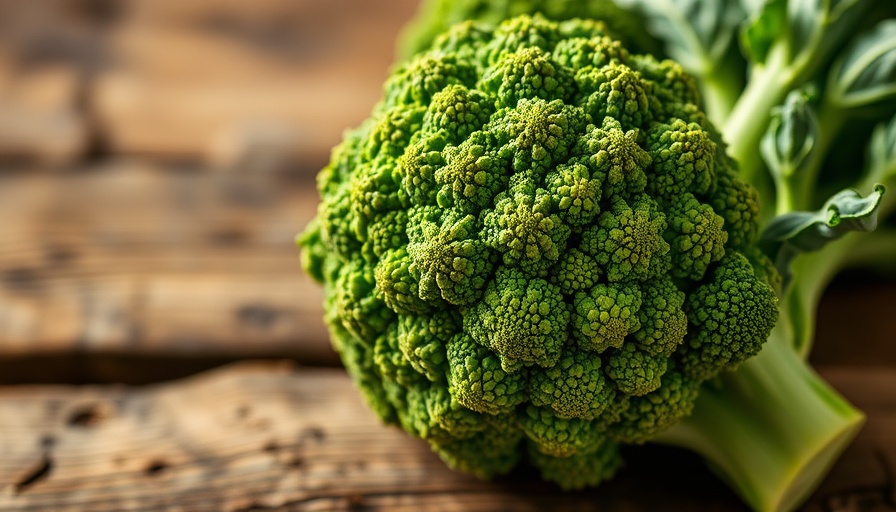
The Charm of Front Yard Vegetable Gardening
As urban landscapes evolve, the desire to cultivate a personal green space is blossoming, especially in communities like Washington. Lizzi's front yard vegetable garden is a perfect reflection of this movement, exemplifying how personalized gardens can contribute to sustainable living while providing nourishment for families. In recent years, urban gardening has grown in popularity, driven by a trend towards self-sufficiency, health consciousness, and environmental care.
Choosing the Right Space for Your Garden
The positioning of your vegetable garden is crucial. In Washington’s climate, with its cool, damp conditions, ensuring adequate sunlight is essential. The right orientation can significantly impact crop production. For instance, a sunny, south-facing plot can yield an abundance of fruits and vegetables, while shaded spaces may be better suited for leafy greens that tolerate cooler temperatures.
Essential Tips for Successful Vegetable Growing
Starting with quality soil is vital. Utilizing a mix of loamy soil enriched with compost can give your plants the nutrients they need to thrive. Testing your soil type—whether sandy, clay, or loamy—will guide your preparation efforts. Regular maintenance, such as turning the soil each spring and applying organic compost, ensures your garden remains fertile.
According to Seattle gardening experts, the local soil can be quite variable, which underscores the importance of knowing your garden’s unique conditions (Reference Article 1). Customizing your approach based on the necessary amendments helps you build a robust garden system. Additionally, precisely following planting schedules and spacing recommendations can lead to healthier plants and more bountiful harvests.
Harvesting the Benefits of Organic Gardening
Emphasizing organic practices helps combat common issues such as pests and diseases, enabling a healthier garden environment. By opting for organic fertilizers and maintaining soil health, you reduce the need for chemical solutions that can impact local ecosystems. Lizzi’s garden integrates composting to recycle kitchen waste, enriching the soil while minimizing landfill contributions.
Planning What to Grow in Your Veggie Garden
Deciding what vegetables to grow hinges on personal preferences and local climate conditions. Popular choices for Washington home gardens include tomatoes, beans, and leafy greens—all of which can flourish given the right care. By starting with plants your family enjoys eating, you not only create a rewarding gardening experience but also inspire kids to embrace nutritious foods.
Furthermore, as the article from Seattle Times recommends, starting small is an effective strategy. Focus on a few versatile crops before expanding your garden. For instance, growing lettuces and snap peas can yield satisfying results with less investment in time and resources.
Innovative Gardening Techniques
As trends in urban gardening evolve, innovative techniques such as vertical gardening and container gardening also emerge as appealing options. Utilizing vertical space maximizes crop yields even in limited areas, while pots allow for mobility and adaptability, ensuring plants receive optimal light. This adaptation is especially useful in urban settings where traditional planting space may be limited.
Emotional and Psychological Benefits of Gardening
Not only does veggie gardening benefit the body through fresh produce, but it also promotes mental well-being. Engaging with nature has been shown to reduce stress and improve mood, enhancing overall life satisfaction. As you cultivate your garden, a sense of accomplishment grows alongside your plants—each harvest a testament to your hard work and care.
Join the Gardening Community
Communities throughout Washington are increasingly fostering gardening initiatives that bring people together to share knowledge and experiences. Participating in local gardening clubs or community gardens can enhance your skills while building connections with fellow gardening enthusiasts. This collective spirit can further inspire creativity, accountability, and camaraderie.
Your Gardening Journey Awaits!
If you’re ready to dig in and start your gardening journey, remember that success unfolds through reflection and practice. Whether you choose to prioritize vegetable gardening or flower cultivation, the opportunities are boundless. As you embark on this rewarding venture, embrace the delicate balance of patience and enthusiasm—your garden is waiting!
Join us in cultivating vibrant vegetable gardens and share your experiences with our community today!
 Add Row
Add Row  Add
Add 


Write A Comment